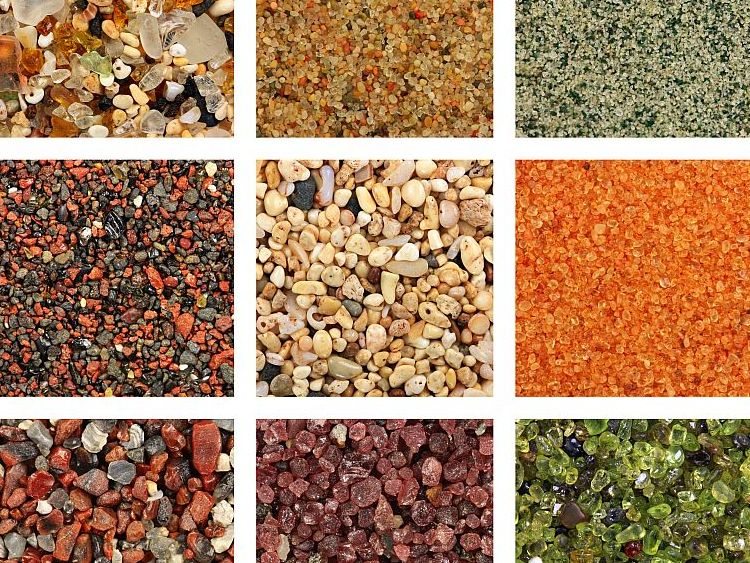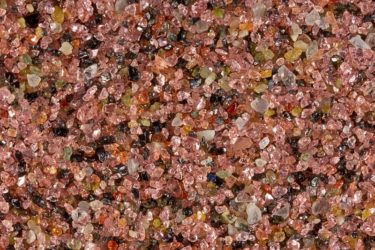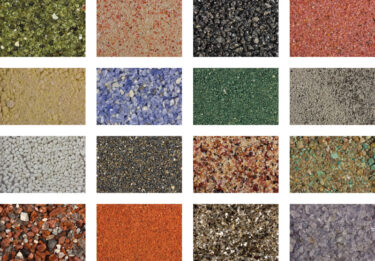Unlike rocks or minerals, sand doesn’t have a standardized scientific classification. Yet anyone who has walked along different beaches or riverbanks knows that sand is far from uniform. It can vary greatly in color, grain size, composition, and origin.
While geologists haven’t agreed on an official system, the diversity of sands found around the world tells a clear story: certain types consistently appear in similar environments.
These recurring patterns make it possible to group sands by their geological origin and the materials that form them.
On this page, you’ll find an overview of sand types that stand out for their composition and setting – from coral sands formed by marine life, to quartz-rich continental sands, to the dark, heavy grains found near volcanoes. Each image and description offers a glimpse into the geological processes that created them.
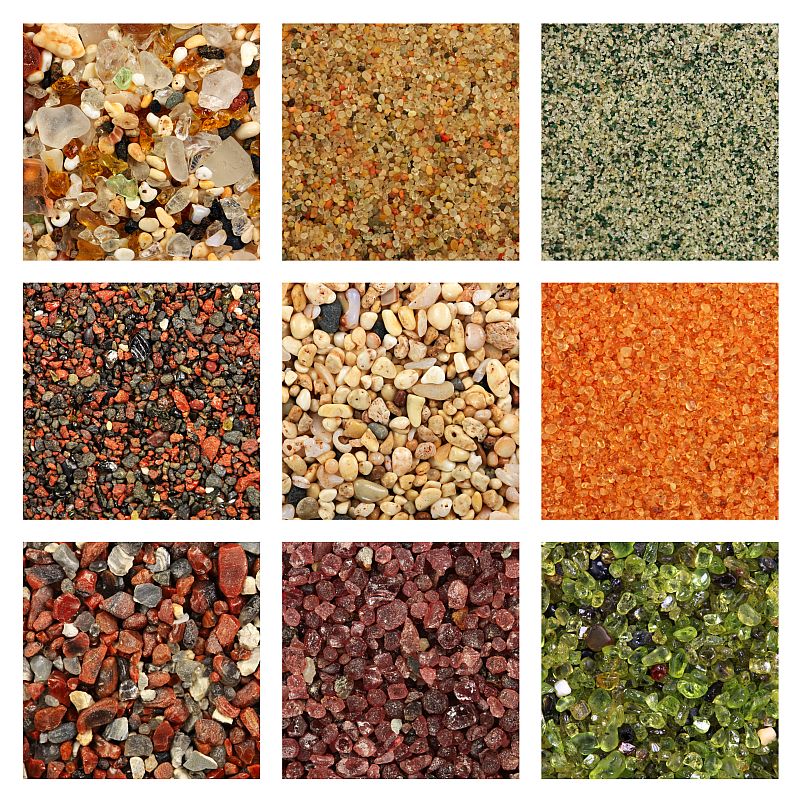
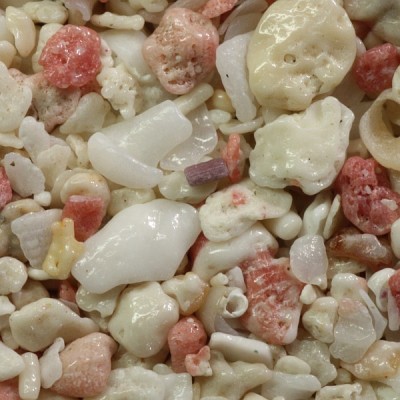
is composed mostly of fragmented coral and shells, originating from tropical marine environments. It is typically light-colored and rich in calcium carbonate.
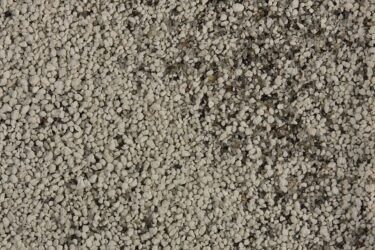
is a fine-grained material ejected during eruptions, consisting of shattered volcanic glass and minerals.

contains significant amounts of human-made material – ordinary glass. It can be visually striking, although its origin lies in trash dumped into the sea.
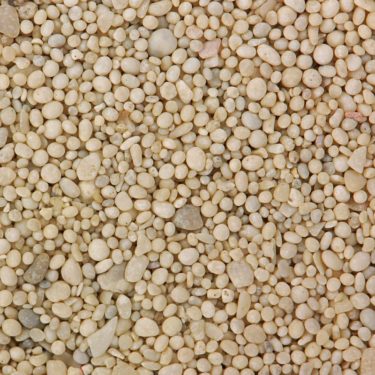
consists of small, spherical grains formed by concentric layers of calcium carbonate. It typically accumulates in warm, shallow marine waters.
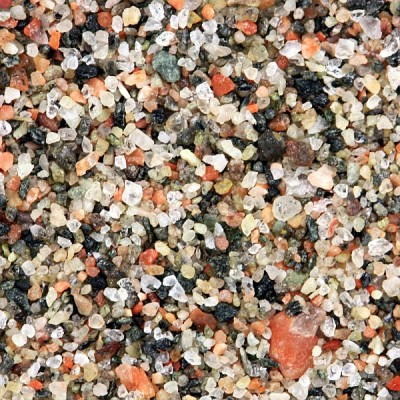
is sand composed of the same minerals that made up its parent rocks.
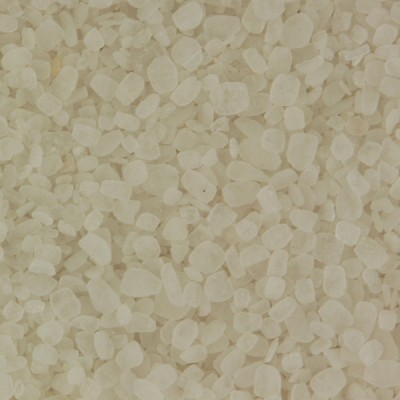
is a rare sand type composed of gypsum grains.

is a super mature sand type composed almost exclusively of quartz grains.

is dark due to heavy volcanic minerals like magnetite or basalt. It is commonly found on volcanic beaches and is quite dense. However, there are also non-volcanic varieties of black sand.
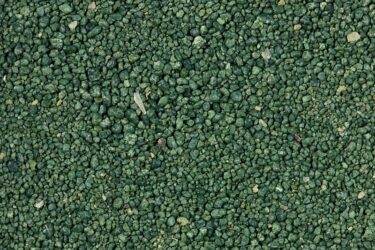
is greenish and formed in marine environments with slow sedimentation. It contains the mineral glauconite, rich in potassium and iron. However, not all green beaches are composed of glauconite.
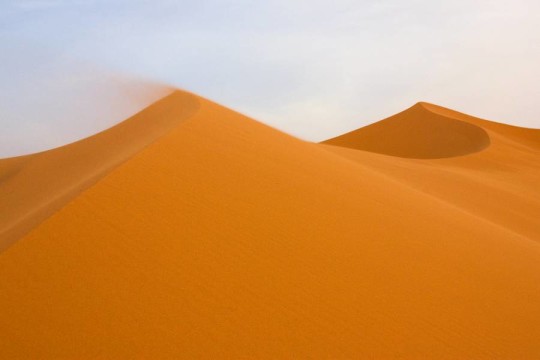
features well-rounded, fine grains shaped by wind erosion. It is often composed of quartz and has a reddish or yellow tint due to iron oxide.
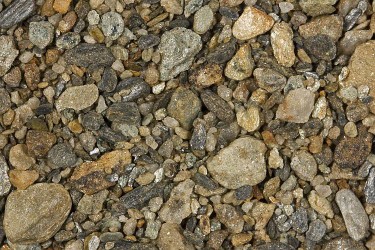
is rich in rock fragments (lithics) rather than individual minerals. It typically reflects a short transport distance from the source rock.
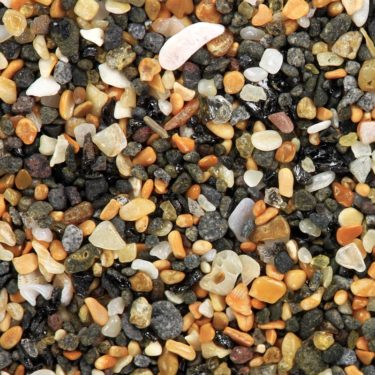
blends carbonate materials like shells with silicate grains like quartz. It forms in transitional environments such as tropical shelves.
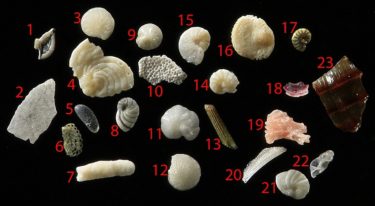
originates from organic sources such as shells, corals, and marine organisms. It is common in reef environments and usually light-colored, though it can also occur in cold-water settings.
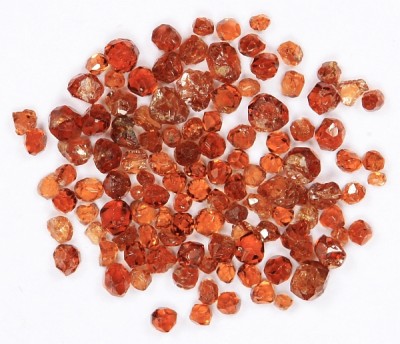
contains abundant grains of the mineral garnet, known for its reddish color and high density. It is often used as an abrasive material.
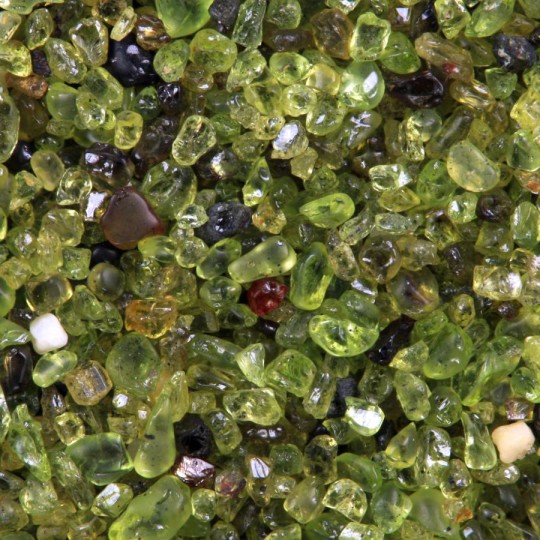
is greenish due to the presence of olivine, a magnesium-iron silicate. It forms from rapidly weathering volcanic rocks like basalt or tuff.
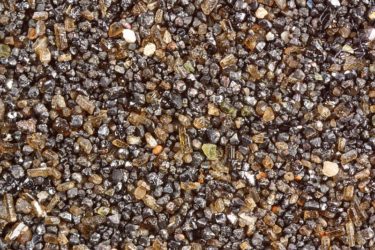
is composed of fragmented volcanic materials, such as basalt, glass, and crystals. It forms near volcanoes and is usually dark and angular.
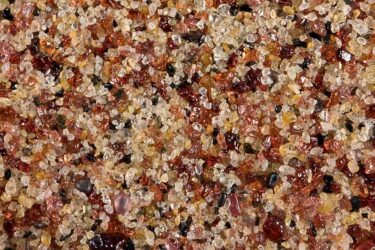
contains a mix of dense minerals like zircon, ilmenite, and rutile. It is often mined for its valuable industrial components.
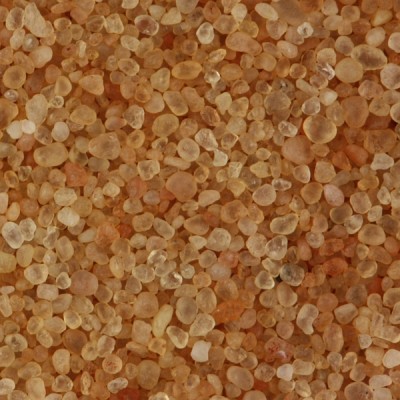
are stained red or brown by iron oxides like hematite. The pigment gives the grains a rusty appearance and indicates oxidizing conditions.
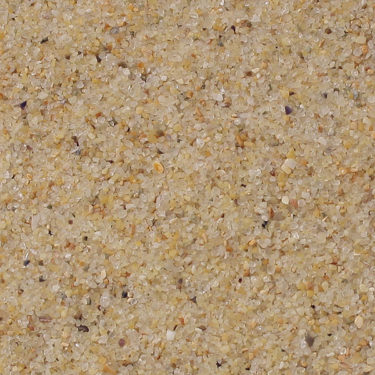
originates from weathered continental rocks, especially granites. It is quartz-rich and commonly found in rivers and beaches across continental landmasses.
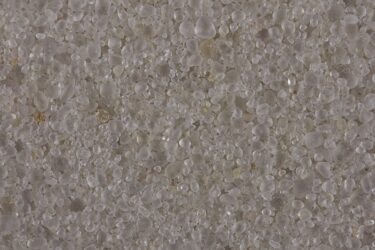
is composed almost entirely of quartz grains. It is durable, chemically resistant, and one of the most common types of sand on Earth.
Appreciate the visual guide to sand types?
Sandatlas is a one-person project. Consider supporting me on Ko-fi to help grow the global sand collection and keep the site alive.
You may also like
Further reading
Pettijohn, F. J., Potter, P. E. & Siever, R. (1973). Sand and Sandstone. Springer.
Siever, R. (1988). Sand, 2nd Edition. W. H. Freeman & Co.

